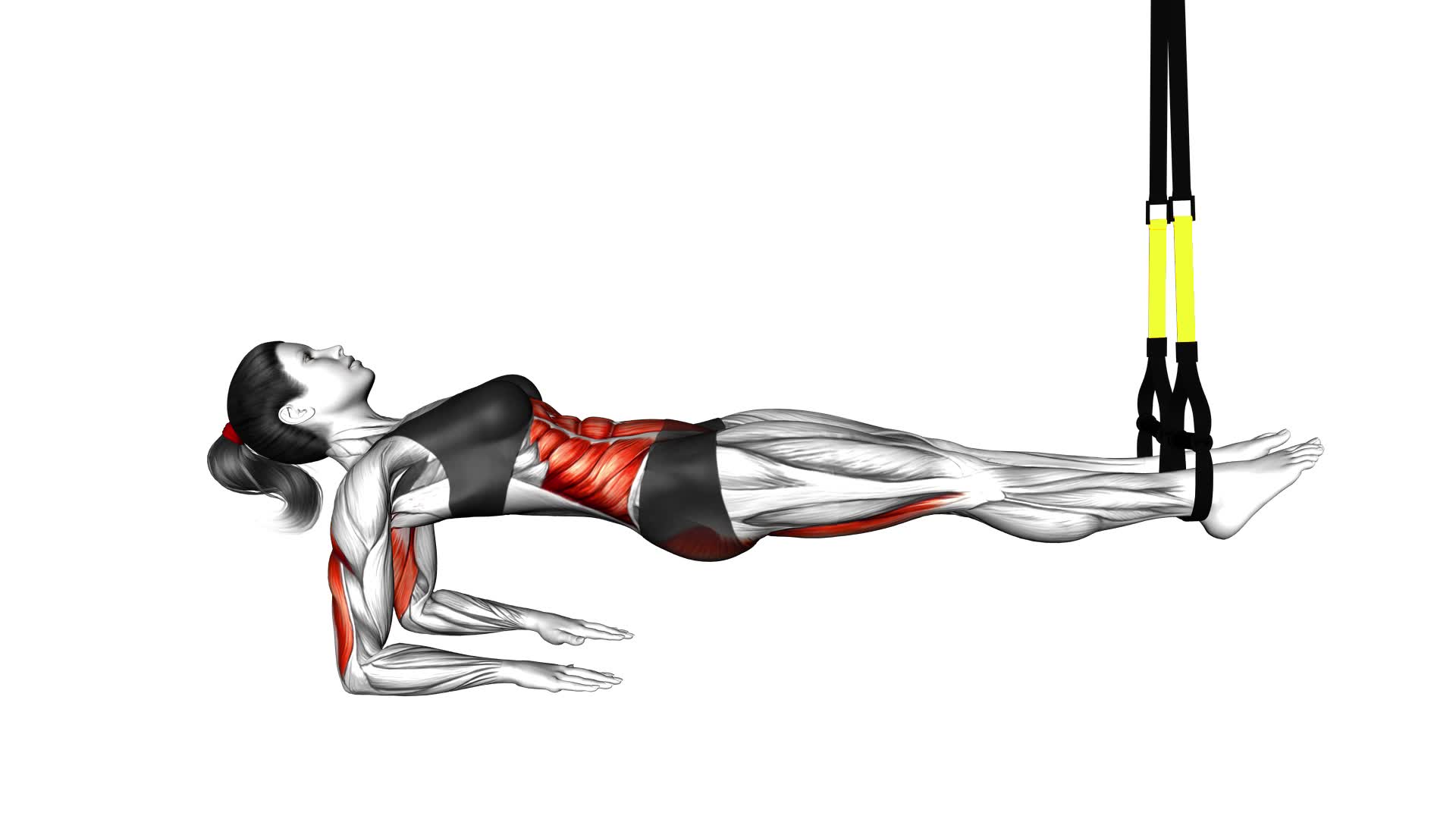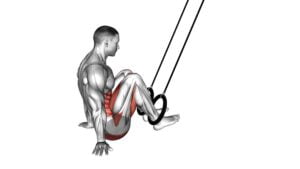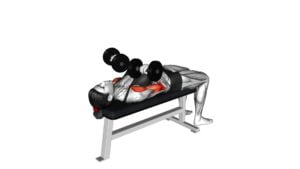Suspender Supine Plank (female) – Video Exercise Guide & Tips

Looking to strengthen your core and improve your overall fitness? The suspender supine plank is the exercise for you.
Watch This Exercise Video
In this video exercise guide, we'll show you the proper form and technique for females. Avoid common mistakes and maximize your results with these helpful tips.
Whether you're a beginner or an advanced fitness enthusiast, we've got modifications and progressions to suit all levels.
Get ready to challenge yourself and achieve your fitness goals with the suspender supine plank.
Key Takeaways
- The Suspender Supine Plank strengthens core muscles and improves overall stability.
- It tones abdominal muscles and reduces the risk of lower back pain.
- This exercise works the hip muscles, glutes, and shoulders while increasing upper body strength.
- Proper form and technique, such as engaging core muscles and maintaining a straight line from head to heels, are crucial for maximizing results.
Benefits of the Suspender Supine Plank
To fully understand the benefits of the Suspender Supine Plank, you need to know what it can do for your core strength and overall stability. This exercise isn't only great for toning your abs but also for preventing injuries. By engaging your core muscles, the Suspender Supine Plank helps to stabilize your spine and improve your posture.
It targets the deep muscles in your abdomen, including the transverse abdominis, which acts as a natural corset for your body. Strengthening these muscles can help reduce the risk of lower back pain and other injuries. Furthermore, the Suspender Supine Plank also works your hip muscles, glutes, and shoulders, providing a full-body workout.
Proper Form and Technique for Females
Now that you understand the benefits of the Suspender Supine Plank for core strength and overall stability, let's focus on the proper form and technique for females. Proper form is crucial to maximize the benefits and minimize the risk of injury. Here are some key points to keep in mind when performing the Suspender Supine Plank for female fitness and core strength:
- Start by lying on your back with your legs extended and your feet in the suspenders. Your hands should be placed by your sides for support.
- Engage your core muscles by pulling your belly button towards your spine. This will help stabilize your body throughout the exercise.
- Lift your hips off the ground, keeping your body in a straight line from your head to your heels. Avoid arching your back or letting your hips sag.
- Hold this position for 20-30 seconds, focusing on maintaining proper form and breathing steadily.
By following these guidelines, you can ensure that you're getting the most out of the Suspender Supine Plank exercise for female fitness and core strength.
Now, let's move on to the next section to learn about common mistakes to avoid while performing the exercise.
Common Mistakes to Avoid While Performing the Exercise
Avoid these common mistakes when performing the Suspender Supine Plank exercise to ensure proper form and maximize its benefits for female fitness and core strength.
One common mistake to avoid is letting your hips sag. When performing the Suspender Supine Plank, it's important to keep your body in a straight line from your head to your toes. If your hips drop, it puts unnecessary stress on your lower back and reduces the effectiveness of the exercise. Engage your core muscles and focus on maintaining a straight line throughout the entire duration of the exercise.
Another mistake to watch out for is lifting your shoulders too high. While it's important to engage your upper body muscles in the Suspender Supine Plank, lifting your shoulders too high can strain your neck and shoulders. Keep your shoulders relaxed and avoid shrugging them towards your ears. Instead, focus on engaging your core and maintaining a strong, stable position.
Lastly, avoid rushing through the exercise. The Suspender Supine Plank is meant to be a slow and controlled movement that engages your core muscles. Take your time and focus on maintaining proper form throughout each repetition. Rushing through the exercise can lead to poor form and reduce the effectiveness of the workout.
Tips to Maximize Your Results With the Suspender Supine Plank
To maximize your results with the Suspender Supine Plank, incorporate proper breathing techniques throughout the exercise. Breathing deeply and rhythmically will help you engage your core muscles more effectively and maintain stability throughout the movement.
Here are some additional tips to enhance your experience with the Suspender Supine Plank:
- Experiment with different arm positions: To challenge yourself further, try placing your arms in different positions, such as extending them overhead or out to the sides. This will engage more muscles in your upper body, increasing the difficulty of the exercise.
- Increase the duration: As you become more comfortable with the Suspender Supine Plank, aim to hold the position for longer periods of time. Gradually increase the duration from 30 seconds to a minute or more, pushing your limits and building endurance.
- Add leg movements: To further engage your core and lower body, try lifting one leg at a time while holding the plank position. This will challenge your stability and increase the intensity of the exercise.
- Explore alternative exercises: If the Suspender Supine Plank becomes too challenging or you want to switch things up, consider trying alternative exercises such as the traditional Supine Plank or the Suspender Side Plank. These variations will target similar muscle groups while providing a fresh challenge.
By incorporating these tips into your Suspender Supine Plank routine, you can continue to challenge yourself and maximize your results.
Now, let's move on to the next section, which will cover modifications and progressions for all fitness levels.
Modifications and Progressions for All Fitness Levels
To modify or progress the Suspender Supine Plank based on your fitness level, consider incorporating variations that challenge different muscle groups while maintaining core engagement.
There are several variations you can try to make this exercise more challenging or suitable for different body types.
For beginners or those who are less experienced, you can start by using a lower suspension point or reducing the length of the straps. This will decrease the difficulty and allow you to focus on building core strength and stability. As you progress, you can increase the suspension height or lengthen the straps to add more instability and challenge your muscles further.
To incorporate the Suspender Supine Plank into a full-body workout routine, you can include it as part of a circuit or superset. For example, you can perform a set of squats, followed by a set of Suspender Supine Planks, and then move on to another exercise such as lunges or push-ups. This will help you engage multiple muscle groups and keep your workout dynamic.
Remember to listen to your body and adjust the variations based on your fitness level and abilities. It's important to maintain proper form and engage your core throughout the exercise to maximize its benefits.
With consistency and progressions, the Suspender Supine Plank can become an effective addition to your fitness routine.
Frequently Asked Questions
How Long Should I Hold the Suspender Supine Plank for Optimal Results?
For optimal results, you should hold the suspender supine plank for a duration that challenges your muscles without compromising your form.
The length of time may vary depending on your fitness level and goals. Holding the position for at least 30 seconds can help improve core strength and stability.
However, it's important to listen to your body and avoid common mistakes such as sagging hips or holding your breath.
Remember to engage your core and breathe throughout the exercise.
Can I Perform the Suspender Supine Plank if I Have Lower Back Pain?
If you have lower back pain, it's important to be cautious when performing the suspender supine plank. This exercise can potentially worsen your pain if not done correctly.
However, there are modifications you can make to alleviate stress on your lower back.
It's recommended to consult with a fitness professional or physical therapist to ensure you're performing the exercise safely and effectively.
Are There Any Alternative Exercises That Target the Same Muscle Groups as the Suspender Supine Plank?
There are several alternative exercises that target the same muscle groups as the suspender supine plank. You can try exercises like the traditional supine plank, Russian twists, or mountain climbers.
These exercises engage the core muscles, including the abs, obliques, and lower back.
Incorporating these alternative exercises into your routine can help you strengthen and tone these muscle groups without putting strain on your lower back.
Remember to consult with a fitness professional if you have any concerns or questions.
Should I Incorporate the Suspender Supine Plank Into My Warm-Up or Cool-Down Routine?
Incorporating the Suspender Supine Plank into your warm-up or cool-down routine can be beneficial. It helps engage your core muscles and improve stability. However, it's important to also include other plank variations to target different muscle groups.
Warm-up and cool-down routines are essential for preparing your body for exercise and aiding in recovery. They can help prevent injury, increase flexibility, and improve overall performance.
Remember to consult with a fitness professional to ensure the exercises are suitable for your fitness level.
Can I Perform the Suspender Supine Plank if I Don't Have Access to Suspenders or a Suspension Trainer?
If you don't have access to suspenders or a suspension trainer, you can still perform the suspender supine plank by using alternative equipment like resistance bands or a TRX system.
The suspender supine plank is a beneficial exercise that targets your core muscles, improves stability, and strengthens your upper body.
It's important to maintain proper form and engage your core throughout the exercise to maximize its effectiveness.
Conclusion
In conclusion, the suspender supine plank is a beneficial exercise for females that can help improve core strength and stability.
By maintaining proper form and avoiding common mistakes, you can maximize the effectiveness of this exercise.
Additionally, implementing modifications and progressions can cater to different fitness levels, allowing everyone to challenge themselves and see results.
Incorporate the suspender supine plank into your workout routine for a stronger and more stable core.

Author
Years ago, the spark of my life’s passion ignited in my mind the moment I stepped into the local gym for the first time. The inaugural bead of perspiration, the initial endeavor, the very first surge of endorphins, and a sense of pride that washed over me post-workout marked the beginning of my deep-seated interest in strength sports, fitness, and sports nutrition. This very curiosity blossomed rapidly into a profound fascination, propelling me to earn a Master’s degree in Physical Education from the Academy of Physical Education in Krakow, followed by a Sports Manager diploma from the Jagiellonian University. My journey of growth led me to gain more specialized qualifications, such as being a certified personal trainer with a focus on sports dietetics, a lifeguard, and an instructor for wellness and corrective gymnastics. Theoretical knowledge paired seamlessly with practical experience, reinforcing my belief that the transformation of individuals under my guidance was also a reflection of my personal growth. This belief holds true even today. Each day, I strive to push the boundaries and explore new realms. These realms gently elevate me to greater heights. The unique combination of passion for my field and the continuous quest for growth fuels my drive to break new ground.







